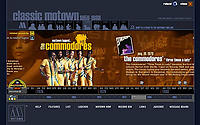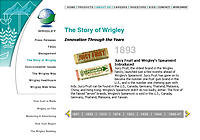design::writings
Amazon Speaks
Interesting interview by Mark Hurst of Good Experience with Maryam Mohit of Amazon.com. Mark Hurst probes into Amazon's customer research secrets and how they have acheived their successful customer experience.
“For us, it's a combination of listening really hard to customers, and innovating on their behalf. For example, quite awhile ago we developed the "similarities" feature - the one that says "people who bought this also bought that." In focus groups, no customer ever specifically requested that feature. But if you listened to customers talk about how they buy things, they'd say, my friend bought this, and I like what they like. In other words, they get recommendations from people they trust. There was a cognitive leap, based on those comments, to realizing that we could create something like that based on the data we had. That's an example where there was a need expressed by customers, but the innovation was taking that general need and making the leap to a technology that meets that need in a new way. ”
Everyone should be so lucky to work somewhere where all these different aspects of the customer and their needs are measured and listened to.
Posted by erin at 08:50 AM | in Amazon :: | Link | Comments (1)
Sunday 11|17|02
Paintings of Lascaux
When I was in art school, one of the classes I loved best was art history. Most of my classmates despised it - sitting in the dark, listening to the professor drone on while showing slides of old stuff that had no relevance to the modern world. I guess for me, I loved art history because of the connections. Visibly seeing the world progress. I feel the same way about design history. Understanding and following history means you can visually track changes in culture, in the way people think. One of the most interesting connections, for me, was when I realized that art history related to world history and anthropology. The connections, the motivations and the perspective made me want to KNOW, to LEARN.
One of the best and first examples of these connections can be found in the paintings at Lascaux, in France. The cave paintings of Lascaux can be now be visited, virtually. These paintings are prime examples of story telling and early culture and are beautiful works of art and communication.
Posted by erin at 05:42 PM | in History :: | Link | Comments (0)
Thursday 11| 7|02
Motown
 A visual timeline of Motown is a nice combination of imagery, blurbs and points across time. There are soundclips in various spots along the way. You can slide the slider horizontally to move year by year or you can jump in 3 year increments by clicking the images above the body of the timeline. The imagery here is critical to the experience of the information, often using larger images to highlight the more popular or groundbreaking musicians. Done in flash, this is another well designed and usable example.
A visual timeline of Motown is a nice combination of imagery, blurbs and points across time. There are soundclips in various spots along the way. You can slide the slider horizontally to move year by year or you can jump in 3 year increments by clicking the images above the body of the timeline. The imagery here is critical to the experience of the information, often using larger images to highlight the more popular or groundbreaking musicians. Done in flash, this is another well designed and usable example.
Posted by erin at 05:24 PM | in Timelines :: | Link | Comments (0)
Wrigley Gum
 Wrigley - the gum people - has an interesting embedded timeline in their site. The timeline scrolls horozontally (I think it is an iframe) and changes the frame above it. Each year touches on some historical point of interest about the company or their product. Nice. No flash, relatively intuitive and not fussy.
Wrigley - the gum people - has an interesting embedded timeline in their site. The timeline scrolls horozontally (I think it is an iframe) and changes the frame above it. Each year touches on some historical point of interest about the company or their product. Nice. No flash, relatively intuitive and not fussy.
Posted by erin at 09:06 AM | in Timelines :: | Link | Comments (0)
Monday 11| 4|02
Designing AIfIA
Just a brief note about the AIfIA. In addition to the initiatives I am working on, I designed the logo and the website and led the IA efforts. We often talk about how difficult it is to develop IA for our organizations, do you realize how hard it is to design an IA for a group of IAs? These last several months have been some of the most interesting and rewarding I have had in awhile.
If you are curious as to where the Asilomar comes from check this thread out.
Mike Lee shares some of his refuges.
Posted by erin at 03:21 PM | in Information Architecture :: | Link | Comments (4)
Announcing the AIfIA
![]()
Announcing the Asilomar Institute for Information Architecture! If many of you were wondering why the postings on this site were so sporadic over the last several months this is why.
The Institute is a non-profit organization dedicated to advancing and promoting information architecture. We're working on creating resources for information architects, information about promoting IA and the benefits of IA, and we're creating a framework that can support research and advancement of the discipline.
One of the initiatives I am personally working on is the creation of tools for in-house IAs. Having dealt with these issues myself, I know how frustrating it can be to "sell" your work to your own people. Tools, process maps, ROI studies, research on effectiveness, case studies, elevator pitches and other things that you can use, will make your life and mine easier. When we can spend our time "doing" our work instead of "justifying" it we will all be better off.
We need help from the community to make this vision a reality. That support could come in the form of membership -- http://aifia.org/pg/get_involved.php -- volunteering, or even just helping us out with a link on your blog and sending some traffic our way.
Join us.
Become a member:
--> http://www.aifia.org/signup/index.php
Find an Initiative that you want to help volunteer for:
--> http://www.aifia.org/pg/initiatives.php
--> http://aifia.org/contact/index.php?type=vol
Plan on attending our leadership seminar:
--> http://aifia.org/calendar/000053.php
Sign up for our newsletter:
--> http://lists.ibiblio.org/mailman/listinfo/aifia-announce
Help promote AIfIA (and IA):
--> Post a link to http://www.aifia.org on your site
--> Pass the URL on to friends and colleagues
--> Discuss AIfIA on this or other mailing lists
Posted by erin at 02:20 PM | in Information Architecture :: | Link | Comments (0)
Sunday 11| 3|02
International Posters
I came across these two sites recently: Transnational Poster Art and Cuban Poster Art Archive. They are both full of several pages of posters - a lot of political propganda posters. This art form is extremely interesting to study. Many of the great graphic designers we study in this country, originally came from Europe so it is nice to see collections of work from designers from other countries.
The Cuban poster site has over 60 posters listed with credits. The only problem is that you can't enlarge the images. Bummer. But many of the posters can be bought at this online gallery. The gallery site also has larger versions to enjoy.
The Transnational site is interesting in that it covers work from East Germany and Latin America - most specifically Chile and Nicaragua. There is also a whole section on Anti-USA Posters with posters going up to 1986.
Posted by erin at 02:04 PM | in History :: | Link | Comments (0)
Friday 11| 1|02
Discussing the interview
Interesting discussion over at Web Word about the interview with Jesse James Garrett. Folks are debating his point about why people don't know the names of the folks behind the design and usability of sites like Amazon.
Actually, I do know the name of one of their designers, who has corresponded with me about some of my comments about Amazon's designs. So they are out there, just quietly toiling away doing cool things.
Posted by erin at 10:46 AM | in People :: | Link | Comments (1)








